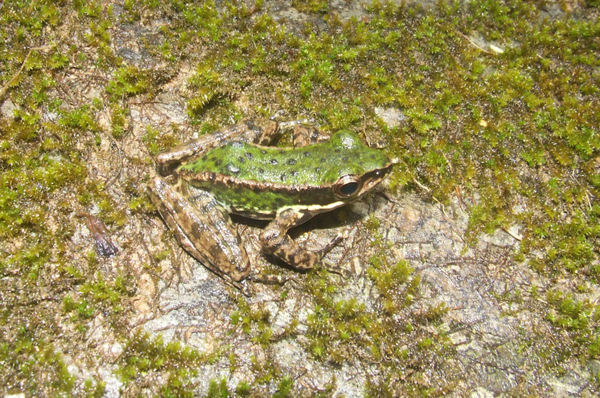208 Species Discovered in Asia's Mekong Region in 1 Year


Deep in a remote forest, locals report that the small black-and-white monkeys with tiny upturned noses are easy to locate, especially when it rains.
But scientists in the rest of the world just learned of "Snubby" — as they have nicknamed the species — this year, from hunters in Myanmar's remote, mountainous Kachin State. It has never been photographed alive.
The primate is just one of the 208 species discovered in the Greater Mekong region in the past year, according to a report released today (Dec. 12) by the conservation organization World Wide Fund for Nature (WWF).
The Greater Mekong region, which sprawls across the countries of Cambodia, Laos, Myanmar, Thailand, Vietnam and China, teems with some of the most diverse, and endangered, species of plants and animals on the planet. [Images of the new species.]
"Biodiversity isn't evenly distributed around the planet – some areas [are] more blessed than others," said Stuart Chapman, director of the WWF Greater Mekong Program.
And in the Greater Mekong, "there is incredible diversity – swamps to forest to a river that stretches from plateau to delta," Chapman said.
An unexplored world
Get the world’s most fascinating discoveries delivered straight to your inbox.
One reason for the high rate of scientific discoveries is that, unlike the Indonesian/Malaysian island of Borneo and other high-diversity regions around the world, the Greater Mekong was off-limits to researchers until the past two decades because of war and political conflict.
One species discovered in the past year was an all-female lizard species that reproduces via cloning. A scientist found the live lizards in a cage outside of a restaurant in the BaRia-Vung Tau province of Vietnam, ready to become someone's dinner.
Chapman says such a serendipitous method of discovery is not all that uncommon. "Some of the more-spectacular discoveries have often been from local knowledge, from animals appearing in markets and biologists not recognizing what they were looking at," he told OurAmazingPlanet.
But the region is home to a large human population, which can sometimes come into conflict with animals. Many of the species discovered are already in danger from threats such as hunting, habitat destruction and climate change.
Because the Greater Mekong encompasses a wide variety of landscapes, plants and animals evolve in tiny areas and adapt to the particular habitats found there. Many of the species in this region only ever exist in small numbers.
That's not a problem until some external pressure — a slight shift in temperature or water chemistry, or pressure from hunters or loggers — is applied, and then the species can't survive, Chapman said.
Psychedelic geckos
One new species, a psychedelic-colored gecko, lives only on the tiny Hon Khoai Island, in southern Vietnam. The island's elevation reaches approximately 1,050 feet (320 meters) at its highest point, with thick forests sloping gently down to mangrove tree-lined coasts. The geckos live among the small-to-massive boulders that lie scattered across the island's lowlands.
The geckos are already in danger of extinction.
But the Greater Mekong is also a place where people are beginning to appreciate the benefits of having a clean environment . The WWF estimated that 300-million people depend on healthy natural ecosystems such as rivers, forests and wetlands for their food, livelihoods and cultural customs.
Chapman said the countries there are interested in moving toward a green economy, where they can put values on the "services" that nature provides – from absorbing carbon to soaking up rain during the monsoon season.
"The opportunity in this region is to declare, 'we're not going to compromise these important assets,'" he said.
The region is at a crossroads in terms of its development. He said, "With the richness comes fragility, and also opportunity to ensure conservation."
This story was provided by OurAmazingPlanet, a sister site to LiveScience.


